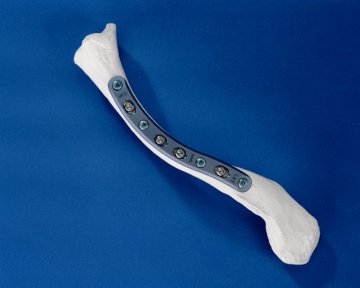Clavicle fractures
Fractures of the clavicle (collar bone) are very common. They can occur from falls and direct trauma and are commonly seen in sports such as cycling, mountain biking, skiing and rugby.
Patients usually complain of localised pain over the bone often with deformity and bruising visible. Suspected fractures need initial sling immobilisation and X-ray assessment.
The fractures can be classified by location ie the outer end (lateral) middle third or inner end. Middle and lateral are the most common. Mid shaft fractures are more common in the young and lateral fractures become more prevalent as we get older.
The diagram below shows the distribution of clavicle fractures by location.

Fractures where the bone fragments are well lined up (undisplaced) usually heal quickly causing few problems.
Treatment of undisplaced fractures usually consists of some time in a sling (2-3 weeks) and return to movement and activity as pain allows. Physiotherapy can assist in the return of movement and activity. Undisplaced fractures generally heal without causing any problems and most will be healed by 8 weeks from injury
The treatment of completely displaced fractures is more controversial.
Xray shows displaced mid shaft clavicle fracture.

Completely displaced middle third fractures fail to heal (non union) at a rate of approximately 15%. Recent studies looking at early surgery for fixation of clavicle showed higher rates of healing and earlier return to function. One Canadian study has shown improved functional outcome with surgery. However a more recent study suggests that functional outcome of a healed displaced fracture is similar whether there is operative or non operative treatment.
There are certain situations where fixation of the clavicle is strongly indicated
- Open fractures
- Fractures where the skin is compromised
- Other fractures in the shoulder blade
When a clavicle is fixed the most popular method is to use a plate and screws (open reduction and internal fixation). This aims to hold the fracture in an anatomical position until the fracture heals. There are plates that are shaped to match the clavicle.
Picture shows an anatomical clavicle plate

Surgery has some risks such as infection of metal work, numbness around the scar and failure of the metal work.
The majority of displaced fracture in the UK are treated without surgery and if the fracture fails to heal (non union) then fixation will then be required. Outcome of surgery for unhealed fractures is generally comparable to surgery for acute fractures.
If surgery is undertaken, a sling will be worn for 3 weeks with pendular exercises initially, physiotherapy is then undertaken to regain range of motion and strength.
Postop X-ray after clavicle fixation

Andrew Brooksbank
Ross Hall, Glasgow

CONSULTING HOURS
CONTACT DETAILS
CONDITIONS
Treatment journey
APPOINTMENTS
Make a consultantion appointment wiith Mr Andrew Brooksbank at BMI Ross Hall Glasgow.
FAQ’s
Frequently asked questions about appointments, treatment, recovery and insurance/payments.

